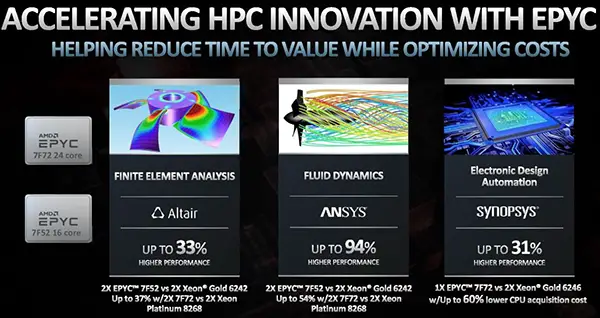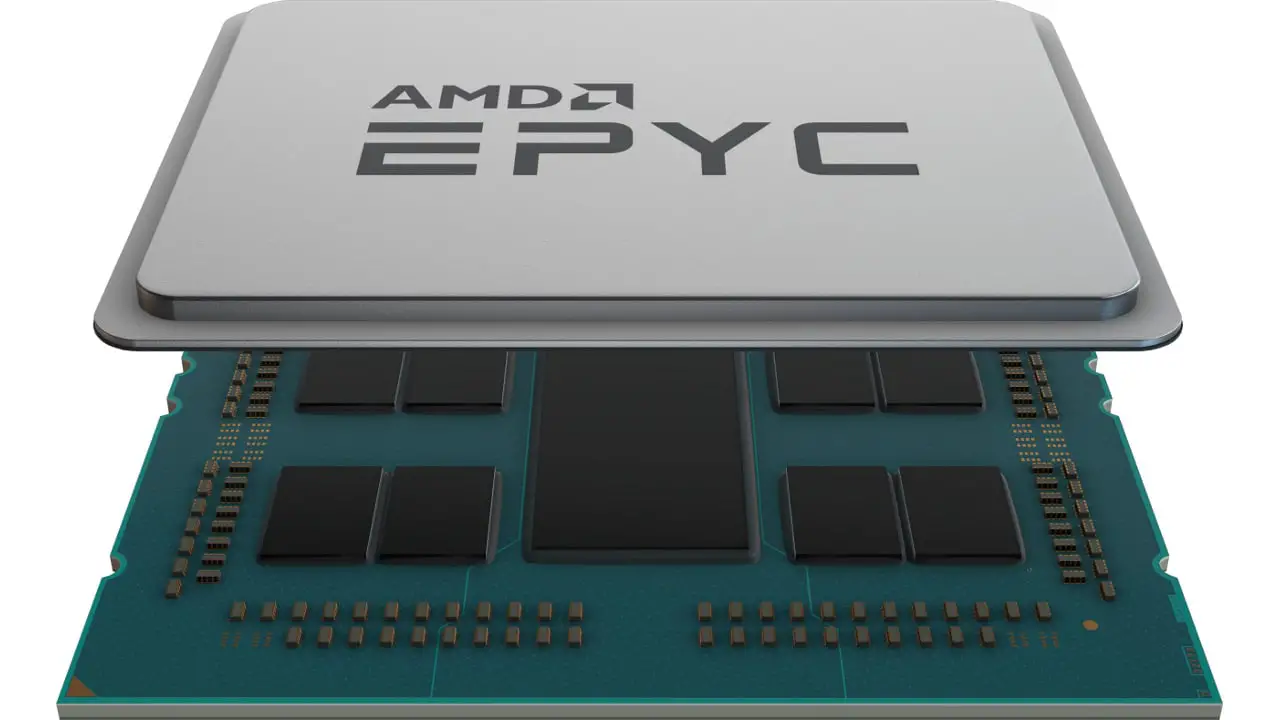AMD has announced the expansion of the second generation "Rome" family of EPYC CPU servers with three models called EPYC 7F32, 7F52 and 7F72 optimized to deliver optimal performance with database workloads, within hyper-converged infrastructures (HCI) and in the commercial high-performance computing (HPC) environment. According to the company, the new EPYCs offer "le higher server performance per core among x86 CPUs", thanks to a mix of high frequencies and a lot of L3 cache per core.
CPU | Core / thread | TDP (Watt) | Freq. base / boost | Total L3 cache | L3 cache per core | Price |
EPYC 7F32 | 8/16 | 180W | 3.7 GHz / ~ 3.9 GHz | 128 MB | 16 MB | $ 2100 |
EPYC 7F52 | 16/32 | 240W | 3.5 GHz / ~ 3.9 GHz | 256 MB | 16 MB | $ 3100 |
EPYC 7F72 | 24/48 | 240W | 3.2 GHz / ~ 3.7 GHz | 192 MB | 8 MB | $ 2,450 |
EPYC 7F32 is a processor with 8 cores / 16 threads who has one base frequency of 3.7 GHz and can accelerate up to 3.9 GHz. It offers 128 MB of L3 cache (16 MB per core), has a TDP of 180 watts and is sold for $ 2,100 on lots of one thousand units. Model EPYC 7F52 it has 16 cores / 32 threads, works at 3.5 / 3.9 GHz and has a 240 watt TDP. The processor integrates 256 MB of L3 cache (16 MB per core) and is priced on lots of one thousand units equal to 3100 dollars.
To finish here EPYC 7F72, a processor with 24 cores and 48 threads that works between 3.2 and 3.7 GHz, has 192 MB of L3 cache (8 MB per core) and a 240 watt TDP. Its price is $ 2,450 on lots of one thousand units. In addition to the significantly higher frequencies than the other EPYC Rome seen so far, AMD has also focused on the amount of L3 cache, in order to improve performance by keeping as much data close to the cores. It should be noted that the maximum boost frequency indicated is that which can be reached by any core in the processor under normal operating conditions.
AMD claims that all this allows new CPUs to reach up to 17% faster performance with SQL Server than competing solutions Intel and HPC performance per core up to 94% higher in fluid dynamics calculations.

Unlike Intel's choice with Cascade Lake Refresh processors, improved in terms of price – performance ratio, AMD has chosen to unveil three processors optimized for certain workloads, with the aim of obtaining maximum performance per core, also at the cost of increasing TDP and prices. AMD seems to want to attack Intel on its own ground, i.e. performance per core. Not to forget that AMD EPYC Rome CPUs also offer eight DDR4-3200 memory channels, 128 PCI Express 4.0 lines and memory support up to 4 TB.
Dell Technologies will support the three new models with Dell EMC PowerEdge servers and will do the same HP Enterprise with HPE Apollo 2000 Gen10 Plus, HPE ProLiant DL385 Gen10 Plus and HPE ProLiant DX systems. The new EPYC CPUs will also find space in the offer of IBM Cloud, Lenovo and Supermicro.















